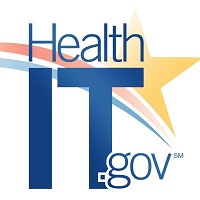 By Seth Pazinski, Peter Karras MBA, PMP, Teresa Zayas Cabán &
By Seth Pazinski, Peter Karras MBA, PMP, Teresa Zayas Cabán &
Kevin Chaney, MGS, ONC
Twitter: @ONC_HealthIT
This year, the Office of the National Coordinator for Health Information Technology (ONC) has released three strategic documents that will help set a path forward for health IT. The 2020-2025 Federal Health IT Strategic Plan, the Strategy on Reducing Regulatory and Administrative Burden Relating to the Use of Health IT and EHRs, and the National Health IT Priorities for Research: A Policy and Development Agenda are united in the aim to improve health, healthcare, and research through the innovative use of technology.
Setting the Stage: Federal Health IT Strategic Plan
ONC released a draft of the 2020-2025 Federal Health IT Strategic Plan (Strategic Plan) this year for public comment. We developed the Strategic Plan in collaboration with more than 25 federal organizations, and it will help guide federal health information technology (IT) activities over the next five years.
ONC and its federal partners thank the consumers, patient advocacy groups, healthcare providers, health IT developers, researchers, health plans, and other stakeholders who provided feedback on the draft Strategic Plan. In total, we received over 90 comments. Over the next few months, ONC will review and analyze the comments received for consideration in the final publication. We anticipate releasing a final Strategic Plan later this year.
The Strategic Plan’s goals are outcomes-driven and intended to guide the activities of federal agencies. Given the many roles that federal agencies play related to health IT, the strategies in this plan are deliberately broad. To move from planning to action, ONC released two additional documents – the Strategy on Reducing Regulatory and Administrative Burden Relating to the Use of Health IT and EHRs [PDF – 907 KB] (Clinician Burden Reduction Strategy) and the National Health IT Priorities for Research: A Policy and Development Agenda (Agenda).
Improving Care: Reducing Clinician Burden
The Clinician Burden Reduction Strategy includes recommendations that align with Goal 2 of the Strategic Plan, “Enhance the Delivery and Experience of Care.” The recommendations include reducing requirements for excessive clinical documentation and streamlining reporting requirements for reimbursement. The report also calls out strategies and recommendations for health IT that, when realized, could have a substantial impact on the clinical workforce as they practice medicine, ultimately resulting in better patient care.
Advancing Science: National Health IT Priorities for Research
The Agenda articulates a vision where research can happen more quickly and effectively through the use of health IT. In particular, the Agenda supports both Goals 3 and 4 of the Strategic Plan. It includes recommendations on linking data sources, harmonizing data elements and standards, and leveraging health IT to improve patient participation in research, which are strategies listed in Goal 3 of the Strategic Plan, “Build a Secure, Data-Driven Ecosystem to Accelerate Research and Innovation.” The Agenda also focuses on advancing health IT capabilities, developing infrastructure and expanding the use of interoperable health information to support research, which the Strategic Plan addresses in Goal 4, “Connect Healthcare and Health Data through an Interoperable Health IT Infrastructure.” ONC intends for these strategies and actions to address the data, tools, and infrastructure needs over the next three to five years, enabling researchers to pursue more complex questions and make faster, more reliable discoveries
Looking ahead, ONC will continue to collaborate with federal agencies and other stakeholders in the private and public sectors to achieve our shared goals and implement strategies outlined in our federal health IT strategy.
Learn more about these strategies.
This article was originally published on Health IT Buzz and is syndicated here with permission.
